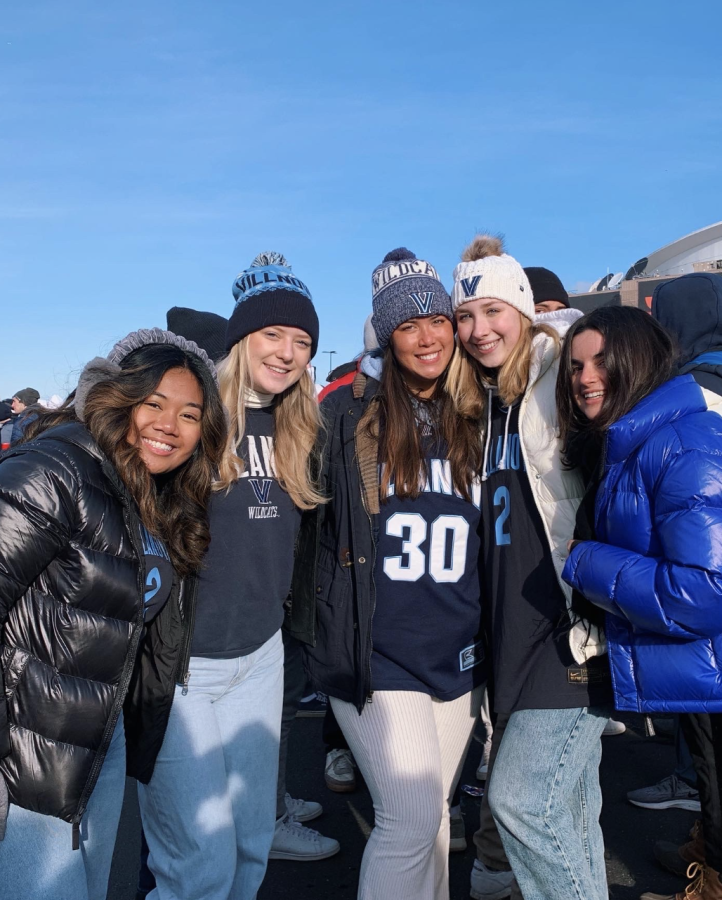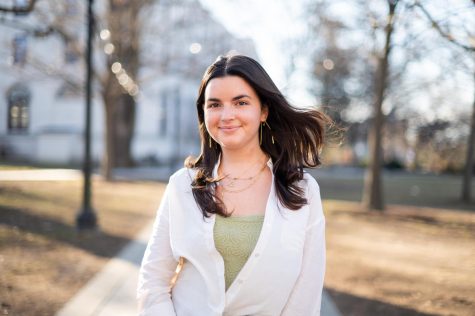Villanova Students Tailgate At Wells Fargo Center
Villanova students gather outside Philadelphia’s Well Fargo Center.
January 29, 2022
Events worth withstanding freezing temperatures for include, but are not limited to, the Super Bowl, the Macy’s Thanksgiving Day Parade, New Year’s Eve in Time Square and, of course, Villanova men’s basketball. On Sunday, Jan. 16, hundreds of loyal Villanova Basketball fans gathered outside Philadelphia’s Wells Fargo Center for the first time since 2020 to support their beloved Wildcats.
But, with a goal of viewing college basketball, why do people feel the need to stand out in the cold for hours before the game? The answer is Tailgate Culture, known in the United States as gatherings of people in parking lots of stadiums and arenas consuming alcoholic beverages. So, is tailgating really just an excuse to get belligerent with friends?
To concisely answer that question, no. Tailgating is an American tradition. It is a time meant to gather fans together to support their favorite sports teams. Unlike many other aspects of our lives these days, tailgating is one thing where people of differing beliefs and backgrounds can find common ground. It brings people together creating a community of people instilled with hope, tradition and camaraderie. Tailgating allows people to gather and grow in excitement together before a game, without it the enthusiasm and intensity that fans bring to a stadium would simply not be the same.
But, is tailgating an exclusively American phenomenon? Historically speaking, a study performed by anthropologist John Sherry at the University of Notre Dame found that tailgating and parking lot parties date back to ancient Rome and Greece, to picnics taking place on the battlefields during the Civil War, and to campouts during the Occupy Wall Street movement. Thus, tailgating has long been used as a way to create a sense of community.
But should colleges and universities allow underage students to gather in large groups where, inevitably, drinking will be involved? Well, Villanova University actually updated its tailgating policy, allowing festivities to begin three hours prior to tip off rather than the standard two. Perhaps this change denotes a shift in the unrealistic and outdated policies regarding underage drinking. Maybe tailgating is the gateway to resolving a deeper, nationwide issue: the legal drinking age.
With so many privileges granted at the age of 18, why shouldn’t drinking be included alongside the ability to vote, enlist in the military, serve on a jury, the list goes on. Realistically speaking, drinking is a part of all tailgate events at colleges and otherwise, and Villanova’s policy allows students to do it responsibly. With transportation provided to and from the stadium and plenty of time allowed for proper consumption of any alcohol one chooses to drink, the University seems to be doing its part to allow its students to enjoy their experience at the game while also being safe.
Villanova’s fans are like no other: supporting their team in below freezing temperatures. With extended time for tailgates and proper transportation, fans can now maximize their tailgating experience. Villanova’s approach to tailgating, though, should not be taken advantage of, but something to appreciate and utilize correctly. Tailgate culture is important, adding to levels of excitement all fans have while waiting to see their peers inside the Wells Fargo Arena.
Villanova students can set the example for safe and responsible alcohol consumption. If we’re going to stand out in the freezing cold for hours on end, we might as well get as much enjoyment out of it as possible, right?











